75 years of freedom: the House of Representatives from 1940 to 1945
From 1940 to 1945 the Netherlands was not an independent democracy but an occupied territory. What did that mean for the House of Representatives?
War comes to the Netherlands
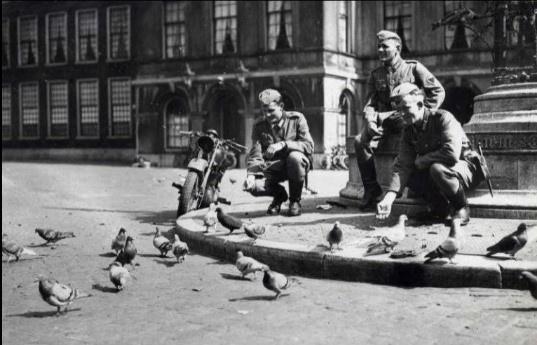
Friday 10 May 1940, 1 pm. German troops have just crossed the border into the Netherlands and the House of Representatives has been called together. But this is not just a normal meeting. Of the 100 Members of Parliament, only 38 are present, nowhere near enough to conduct an official meeting. Yet the Speaker of the House, Joop van Schaik, decides the meeting must go ahead. ‘We are facing the terrible reality of the war,’ he states, while strongly condemning the invasion. Van Schaik suspends the work of the House of Representatives indefinitely; he is well aware that democracy and repression do not go together. The Members of Parliament have no idea how long it will be before they can meet again.
Members of Parliament during the occupation
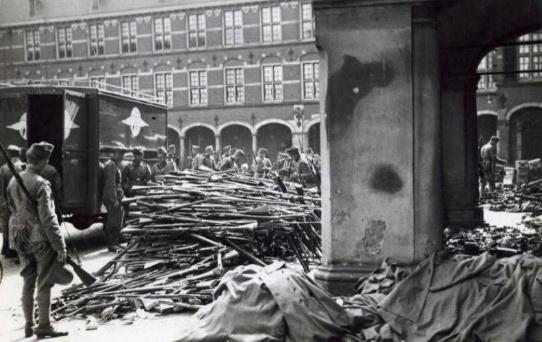
In May 1940 the Dutch government withdrew to London. But what happened to the Members of Parliament during the occupation of the Netherlands? Formally, the House of Representatives continued to exist, but this was in name only. It was impossible for the Members of Parliament to meet together, besides being against their principles. Many of them were interned in hostage camps or prison camps. For example Willem Drees, chair of the SDAP and later Prime Minister, not only spent a year in the German concentration camp at Buchenwald, but was also imprisoned for a short time in the Sint-Michielsgestel hostage camp. Even during the occupation many politicians were considering what changes could be made to the House of Representatives after the war.
Jewish Members of Parliament
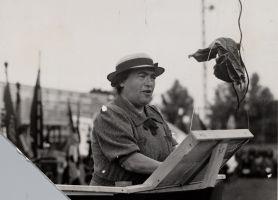
Some Members of Parliament actively resisted the occupiers. One such was Jan Schouten, the party chairman of the ARP, who was one of the founders of the underground newspaper Trouw. He barely survived the notorious Mauthausen concentration camp. Various MPs were murdered during the occupation because of their Jewish background. Among their number was Alida de Jong, who, as a member of the SDAP and a trade unionist, stood up for the rights of women in the clothing industry. She perished in the Sobibor death camp on 9 July 1943.
The occupation of the Binnenhof
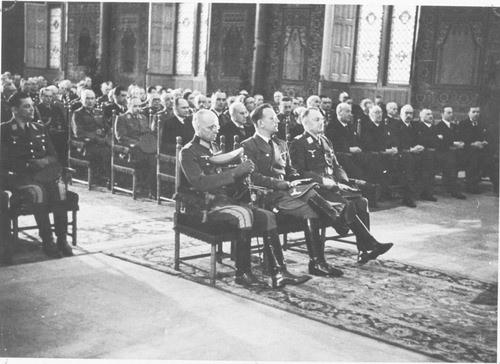
For centuries, the Binnenhof had been the centre of Dutch politics and the heart of the country's democracy. So it was hardly surprising that the occupier used precisely this location to show who was now in control of the country. Fourteen days after the capitulation, Reischskommissar of the Netherlands, Arthur Seyss-Inquart, was inaugurated in the Binnenhof in a display of power. During the years of occupation, the Binnenhof was regularly filled with soldiers. There were troop inspections, new soldiers were inaugurated and the presentation of hundreds of decorations.
The Sicherheitsdienst
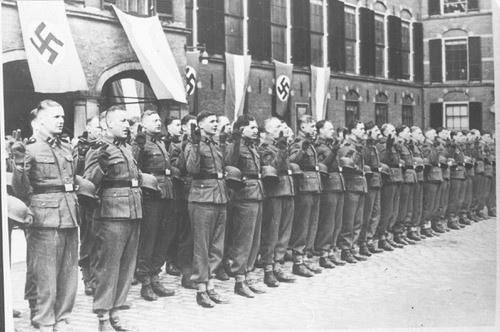
The Binnenhof was also home to the German secret service, the Sicherheitsdienst (SD) which had offices there. Here brutal interrogations took place, sometimes with fatal consequences. Resistance member Sjaak Boezeman died in January 1941, having endured an entire night of beatings in a room at Binnenhof 7. And two years later resistance member Gerrit Kastein threw himself from an upper window in this same building to escape imminent torture. He died of his injuries a few hours later.
Liberation! The House of Representatives resumes its duties
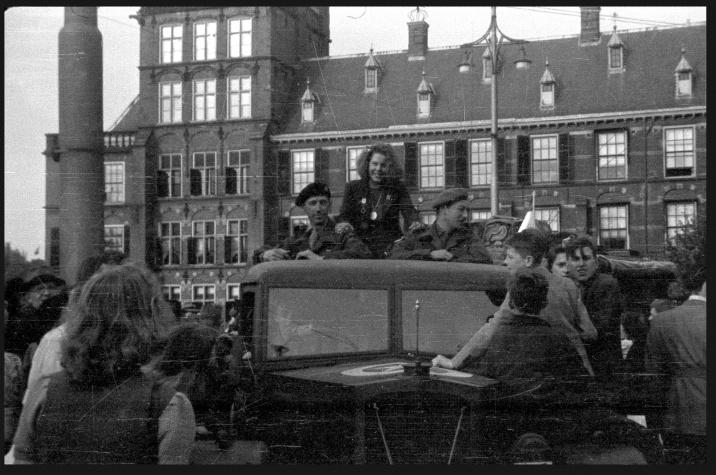
On 5 May 1945, the occupation of the Netherlands came to an end. The Dutch were free to govern themselves once more. However, there was a lot of discussion about the role of the House of Representatives. Did the Members of Parliament still hold a mandate now so many years had passed since their election? And what about the MPs who had died in the meantime; who should replace them? The discussion went on for months until the government finally decided in August 1945 that the pre-war MPs would form a Temporary House of Representatives until new elections could be organised.
Memories of the war
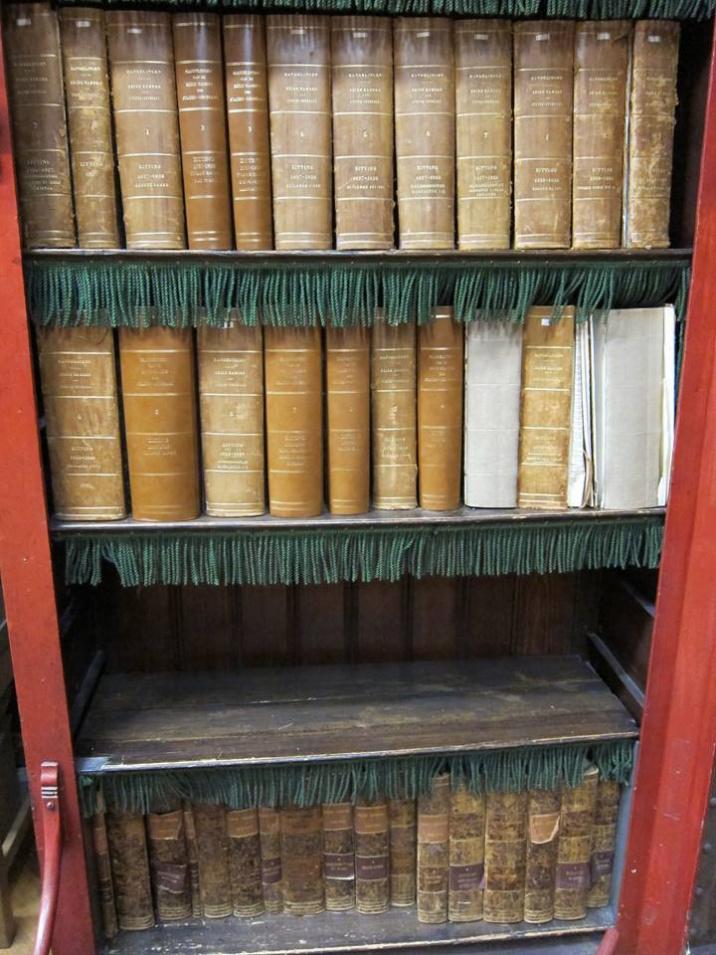
On 25 September 1945 the time had finally come: the House of Representatives convened for the first time in five years. It was anything but a festive occasion, wrote the Volkskrant newspaper. This was mainly due to the many empty seats in the hall. Some of those absent had not survived the war. Others had already resigned in 1941. And the four MPs representing the National Socialist Movement in the Netherlands (NSB) were also missing: one had taken his own life, and the other three had been imprisoned. It would actually take until May 1946 for a new House to be elected.
There are still many locations in the buildings of the House of Representatives that remind of us of the war. One of these is in the old library of the former Ministry of Justice where the Proceedings of the House of Representatives are kept. These are the written reports of everything discussed in the House. In the Handelingenkamer, as the library is also known in Dutch, one shelf remains empty to this day. This is the shelf where the Proceedings of the House of Representatives for the years 1940 to 1945 should have been. Because: without a parliament there is no democracy, and without a democracy there is no freedom.